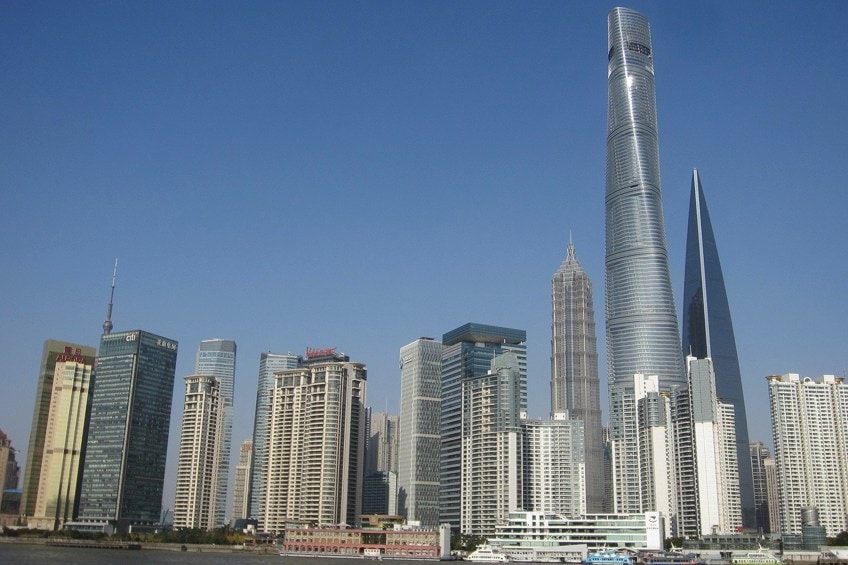Shanghai Tower – What to Know About the Shanghai Skyscraper
When the Shanghai skyscraper first opened in 2015, it was the tallest skyscraper in China. But exactly how tall is the Shanghai Tower and how many floors does Shanghai Tower have? In this article, we will answer your questions about the Shanghai Tower’s floors, and the Shanghai Tower’s height, as well as learn about the Shanghai Tower’s construction and what is inside the Shanghai Tower currently.
The Shanghai Tower
| Date Completed | 2015 |
| Architect | Marshall Strabala (1961 – Present) |
| Function | Mixed-use facility |
| Height | 632 meters |
The tallest structure in all of China, the Shanghai Tower’s height tops off at a dizzying 632 meters above street level, and the Shanghai skyscraper’s floors number 128 stories in total. When the Shanghai skyscraper first opened its doors to the public, it also boasted the second-fastest vertical transport system in the world, with elevators reaching up to 74 km per hour!
The Shanghai skyscraper, a tiered structure with exceptional energy conservation, has nine distinct zones subdivided between retail, office, and recreational usage.
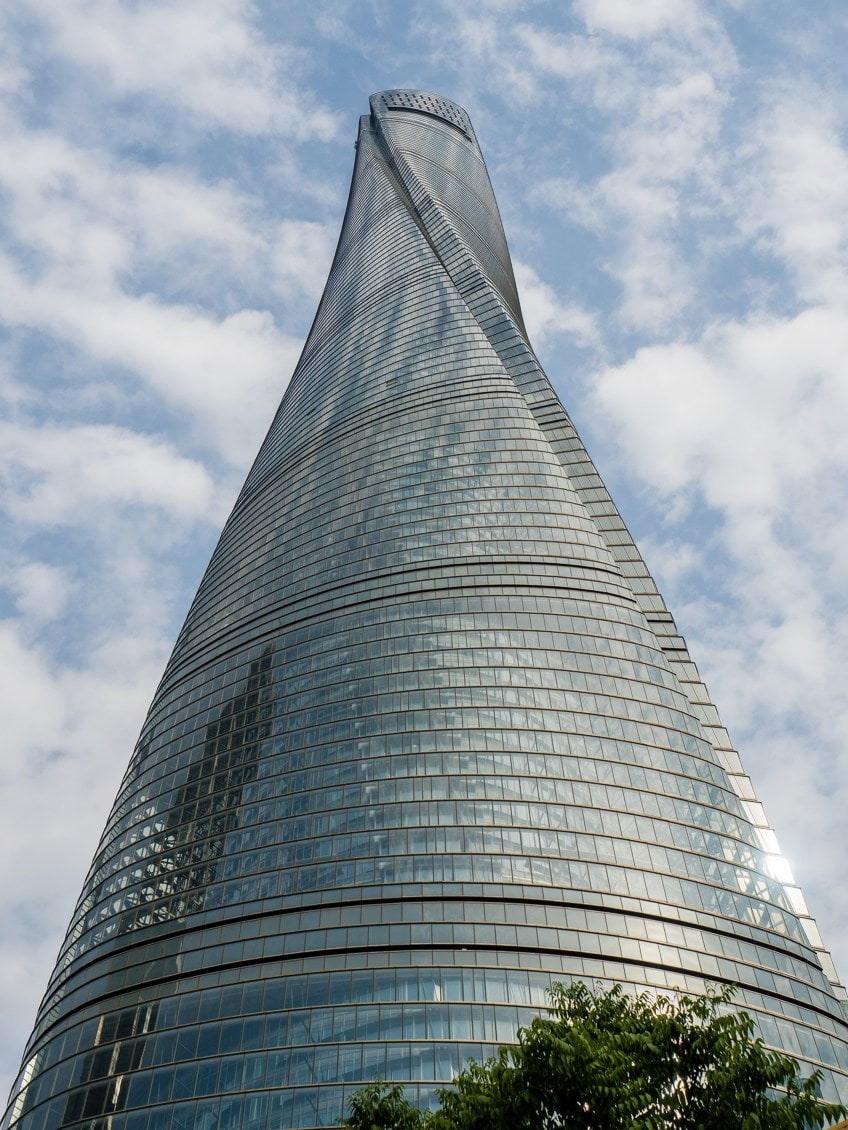
The Shanghai Tower’s Construction
The property, which was once a driving range, was cleared for building in 2008. After the Shanghai skyscraper had cleared an ecological impact review, a groundbreaking celebration was arranged on the 29th of November, 2008. The core of the building was erected floor by floor using a repeating slip-forming technique. By the end of December 2011, the substructure of the skyscraper had been finished, and the steel structure had ascended above the 30th story. Cracks started to show in the roadways around the structure’s building site in the early weeks of 2012.
Ground collapse, as opposed to the load of the structure, was blamed for these cracks, which were most probably a result of extensive groundwater removal in the Shanghai region.
On the 3rd of August 2013, building employees installed the structure’s last structural beam. “With the capping of the Shanghai skyscraper, it will serve as a spectacular reflection of our history, the present moment, and China’s unlimited future”, stated the project’s chief architect. Shanghai Tower Company emphasized the group’s desire “to supply superior quality corporate and retail space, as well as add to the grandeur of the city’s skyline and the overall functionality of the district”. Inside Shanghai Tower, the electrical fitting and interior construction were completed by August 2014, with the facade being finalized shortly after that.
Until June 2017, the skyscraper had difficulty attracting tenants owing to the lack of relevant clearances from the city’s fire department, which made getting the authorized occupancy certificates impossible. Although around 60% of its commercial space had been occupied, just 30% of those occupants had actually moved in, leaving full stories of the skyscraper vacant. The structure’s floor plate had an overall rate of efficiency of just 50% on certain levels, as opposed to 70% for a conventional skyscraper, since the tower’s much-touted outer shell, which brings in natural sunlight and reduces air-conditioning expenses, meant that most of the floor space could not actually be utilized.
Massive water leaks occurred on several floors of the building in 2020, causing extensive damage to computer equipment and office spaces.
The tower stated that the situation had been resolved and that a thorough investigation of the level where the leak started would be performed. Some Chinese users of social media condemned the leakage, saying it was typical of bad construction practices in the region. Technicians employed a crane to pile plates of steel and erect a 1,200-ton damper towards the top of the structure to keep it from wobbling in high winds. The damper is computer-controlled and encircled by pistons that thrust it in the path of high winds to counteract their effect. During typhoons, the pinnacle of the structure might swing up to five feet without a damper.

Shanghai Tower’s Design
The structure contains nine cylindrical towers piled on top of one another, for a total of 128 levels, all enclosed by the interior layers of the tower’s facade. Between this layer and the outermost layer, which bends as it ascends, nine zones supply guests with public areas inside Shanghai Tower. Every one of these nine zones features an atrium with cafés, gardens, and commercial spaces, as well as magnificent panoramas of the city. Both tiers of the exterior are transparent, and the structure’s base includes retail and entertainment areas.
The transparent exterior is an unusual architectural element, since most structures have a single front made of highly reflecting glass to prevent the absorption of heat, but the Shanghai building’s double-layered glass negates the requirement for either of the layers to be opaque.
The skyscraper can host up to 16,000 people each day. The architects drew inspiration from Shanghai’s traditional small courtyards, reimagining them inside a spiraling shape. Instead of parks scattered out over the city, the skyscraper provides vertically arranged meeting areas. These revolutionary sky gardens distinguish the structure from any other high-rise ever erected. Shanghai skyscraper offers a novel environment for working and living in a skyscraper by prioritizing public spaces and putting stores, cafes, and other commercial facilities on the atrium floors.
The Shanghai Tower’s Elevator System
Working together with professionals to construct a high-performance core, the engineers designed a vertical system with four sky lobbies connected by high-speed elevators. Each lobby acts as a social hub for that section of the structure, complete with restaurants and conference facilities.
These sky lobbies provide enough facilities that some employees will not feel obligated to exit the skyscraper throughout the workday, saving money on elevator trips and energy resources.
Smaller zones are accessed by single elevators all through the structure, while the viewing platform deck at the pinnacle of the building is accessible by three high-speed elevators that go up to 70 km/h, the fastest speed ever reached in a commercial skyscraper. Three fireman’s elevators supplement the high-speed shuttle elevators, considerably increasing passenger flow to the viewing platform during high usage hours. In the case of a fire or other disaster, the shuttles are intended to evacuate people from specially-built safety levels positioned at periodic intervals all throughout the tower.
Sustainability Features of the Shanghai Skyscraper
Above all, the 128-story structure aspires to be the planet’s greenest high-rise tower. The state hails the structure’s LEED Platinum certification as proof of China’s expanding sustainability efforts. China’s track record on environmentalism has always been dismal. The nation consumes more than 45% of the world’s coal resources and is dealing with the consequences of decades of water pollution and excessive deforestation. As a result of the world’s most filthy air, which causes up to 4,000 deaths every day, an exceedingly angry public is seeking stronger governmental involvement.
Fearing the effects of smog-filled skies and packed roads on societal stability, the state has started forest restoration programs, forced thousands of vehicles off the highways in places like Beijing, and has invested heavily in green technologies.
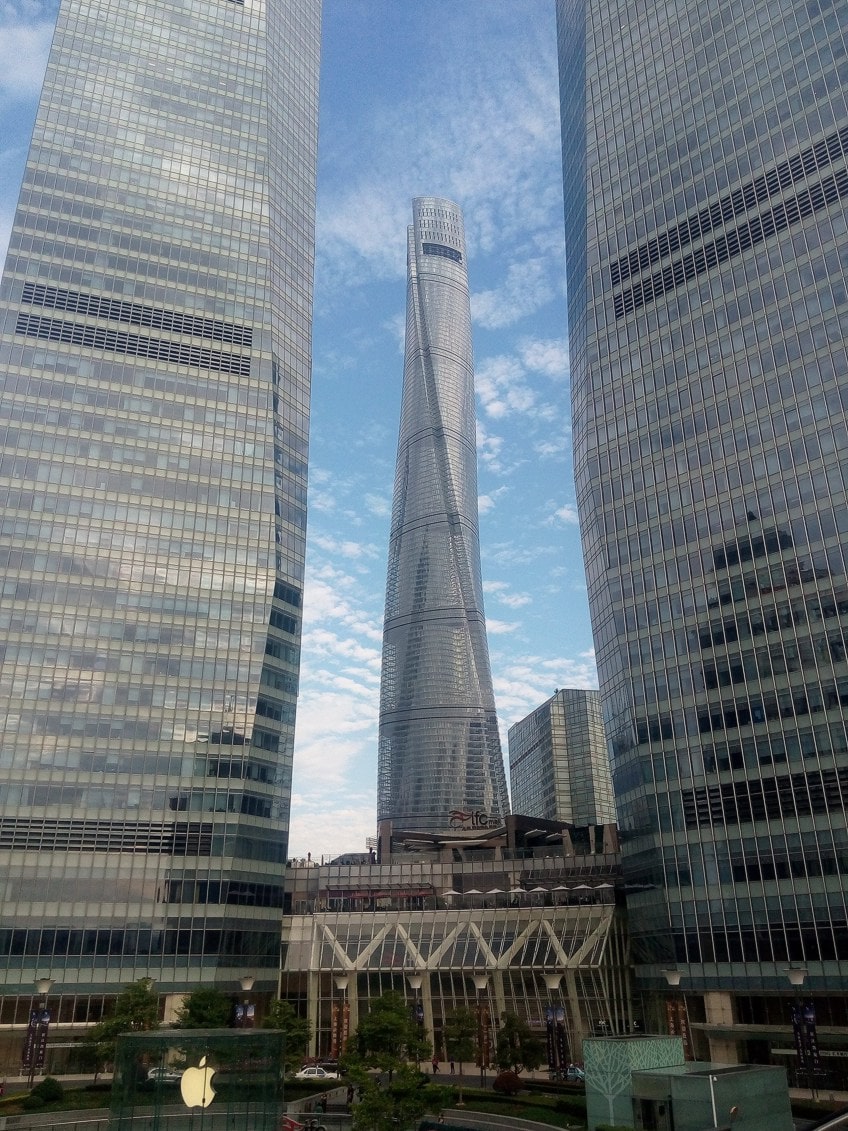
China is currently the world’s largest renewable energy market, well over double that of the United States. At the top of the Shanghai Tower, 200 wind turbines provide around 10% of the tower’s power. These are some of the most visible initiatives, although they are only one component of reducing energy use. The tower gathers rainwater and recycles gray water, has a hybrid heating and cooling system, and employs 40 additional energy-saving techniques that the designers claim reduce its yearly carbon footprint by around 35,000 metric tons.
The skyscraper is covered in a double layer of glass for natural air conditioning and ventilation, and the designers claim that a third of the property is green space available to guests, with a total of 24 sky gardens situated between the two layers.
At the present, everyone is attempting to meet the highest green certification requirements, but only the Shanghai skyscraper has attained LEED Platinum for skyscraper construction. People thought that a structure of this magnitude could not attain such a high level of sustainability. Shanghai Tower may be the only skyscraper to gain LEED Platinum certification, but it is part of a growing trend for skyscrapers to advertise their environmental features as the need for more responsible urban construction grows.
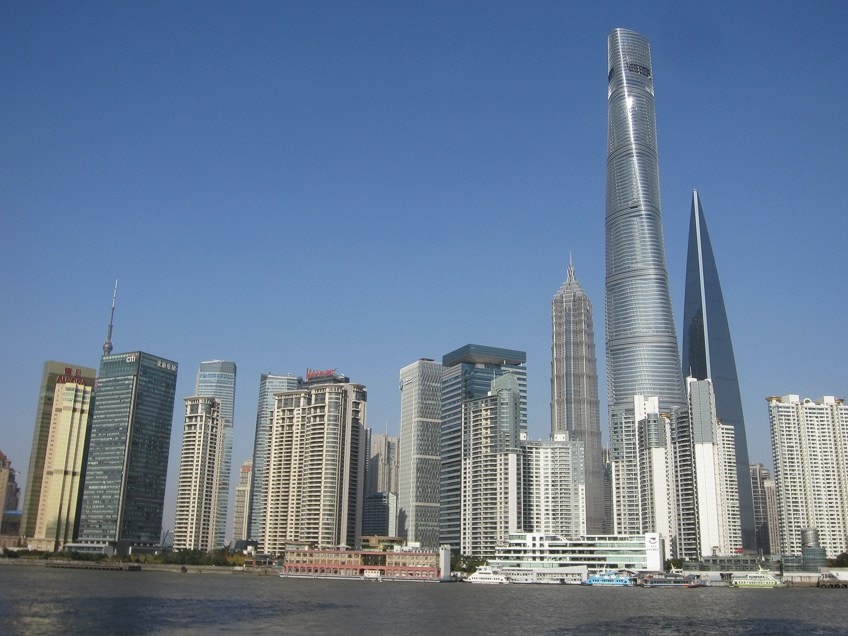
The Shanghai Tower Observation Deck
After approaching the inner door, the first area provided for guests is known as the introductory room, in which there are images and movies documenting the construction of the Shanghai skyscraper, as well as some schematics and models introducing some of the world’s highest structures. After touring the display in the introductory room, guests then queue for the high-speed elevators.
This is a circular observation deck with over 1,000 square meters of space that provides an unobstructed view of the city of Shanghai.
Visitors can take in the stunning vistas of the metropolis and the magnificent river beneath. Guests can experience a breathtaking view of many historic sites in the city, including the historical sites with various architectural designs all along Bund, as well as the Oriental Pearl Tower, a structure that has for many years been regarded as the symbol of present-day Shanghai.
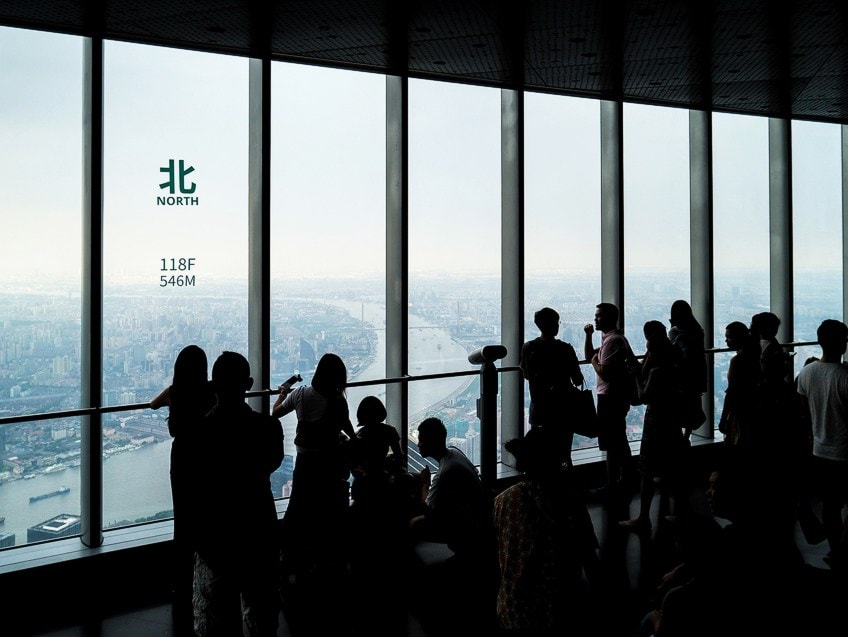
Jin Mao Tower and the Shanghai World Financial Center provide the most stunning views; these two skyscrapers were the highest structures in the region before the construction of Shanghai Tower, yet now, one can stare down at them. There are several telescopes near the windows, but they are not free, therefore you should carry your own. It is advisable to check the weather if you ever plan on visiting since viewing might be impacted by bad weather. It is preferable to take a trip on a clear day, as clarity will be good; otherwise, nothing more can be seen but a foggy haze.
The Chinese love setting records and the Shanghai skyscraper is clearly no exception. Not only is it the tallest structure in China, but it is also rated as one of the tallest skyscraper on the entire planet. That is, however, not its only recognized achievement, as the skyscraper is also very sustainable in its use of water and energy, and is the only building of its size to receive platinum LEED status. Then there are the elevators which have also broken records as the fastest vertical transportation system in a commercial building. So fast, in fact, that they have been clocked at 70km per hour! To top it off (quite literally), the building also features a world-class observation deck (also among the highest in the world) from which you can look down at the previous title holders for Shanghai’s tallest buildings.
Frequently Asked Questions
How Tall Is the Shanghai Tower in China?
The Shanghai tower is measured as being the tallest in all of China, Shanghai Tower’s height tops off at 632 meters above street level. And how many floors does Shanghai Tower have? Shanghai Tower’s floors number 128 in total, but luckily you can take the fastest elevators instead of trying to take the stairs. Visit the observation deck if you want to get a feeling for just how high up in the sky this building ascends to.
What Is Unique About the Shanghai Tower’s Construction?
Much thought was put into the sustainability features of the Shanghai Tower. Double layers of glass were employed to allow sunlight to enter the building and control heat absorption. Special turbines on the roof help generate energy for the building and gray water is recycled and put to use elsewhere in the building. In order to provide everything residents and guests could possibly require, every section inside Shanghai Tower features its own atrium, with restaurants and sky gardens that enable individuals to work and play without ever having to stake a single step out of the skyscraper.
What Is the Shanghai Tower Observation Deck?
Situated towards the top of Shanghai Tower’s floors, this is a circular observation platform that offers a 360-degree view of Shanghai. Visitors may take in the breathtaking views of the city and the gorgeous river below. Guests may enjoy the spectacular view of the city’s many historic landmarks, including those with notable and unique architectural designs.
Justin van Huyssteen is a freelance writer, novelist, and academic originally from Cape Town, South Africa. At present, he has a bachelor’s degree in English and literary theory and an honor’s degree in literary theory. He is currently working towards his master’s degree in literary theory with a focus on animal studies, critical theory, and semiotics within literature. As a novelist and freelancer, he often writes under the pen name L.C. Lupus.
Justin’s preferred literary movements include modern and postmodern literature with literary fiction and genre fiction like sci-fi, post-apocalyptic, and horror being of particular interest. His academia extends to his interest in prose and narratology. He enjoys analyzing a variety of mediums through a literary lens, such as graphic novels, film, and video games.
Justin is working for artincontext.org as an author and content writer since 2022. He is responsible for all blog posts about architecture, literature and poetry.
Learn more about Justin van Huyssteen and the Art in Context Team.
Cite this Article
Justin, van Huyssteen, “Shanghai Tower – What to Know About the Shanghai Skyscraper.” Art in Context. September 2, 2022. URL: https://artincontext.org/shanghai-tower/
van Huyssteen, J. (2022, 2 September). Shanghai Tower – What to Know About the Shanghai Skyscraper. Art in Context. https://artincontext.org/shanghai-tower/
van Huyssteen, Justin. “Shanghai Tower – What to Know About the Shanghai Skyscraper.” Art in Context, September 2, 2022. https://artincontext.org/shanghai-tower/.


